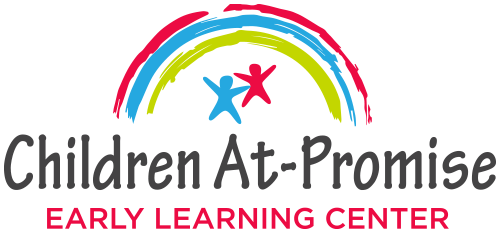ACTIVE LEARNING ENVIRONMENT
Children At-Promise is s well designed and well organized learning environment that is inviting to children, full of interesting materials, and set up to accommodate a range of activities and play, supports children’s growth in all areas of development.
Listed below is our active learning centers and the skills that are developed:
Art Center
- Discover line, color, shape and texture by seeing and feeling objects
- Experiment informally with a variety of simple media
- Express individual thoughts and feelings through picture making, modeling, constructing and printing
- Develop problem-solving skills
- Experiment with art materials to understand properties
- Experiment with art materials to understand cause and effect
- Observe color, texture, size and shape of objects
Listening Center
- Listen attentively
- Make sense out of what is heard
- Expand their vocabulary
- Develop a sense of story
- Eye/hand coordination
- Listen to literary selections for personal enjoyment
Bible Center
- Awareness of God
- Learn to love and forgive others
- Learning that they are a part of God’s family
- Learning acceptance by God and their teachers
- Develop the fruit of the Spirit (love, joy, peace, patience, kindness, goodness, faithfulness, gentleness, self-control)
- Learn to pray and worship
- Learn to work out problems God’s way
- Retell Bible stories
Block Center
- Use vocabulary to designate quantities
- Create, repeat, and/or extend patterns
- Observe and follow safety rules
- Learn mapping skills
- Learn size and shape differentiation, relations and recognition
- Think, create and implement plans
- Discover the names of buildings and the functions of building
Computer Center
- Match objects in one-to-one correspondence
- Match letters, compare objects, and count objects
- Recognize similarities and differences
- Match pair, sort and classify objects
- Discover color, line, size and shape of objects
- Combine sets
- Identify or repeat a simple pattern
- Demonstrate the concept of part/whole relationship
- Develop perceptual awareness skills
Library Center
- Move to rhythm, respond to directions
- Explore musical sounds
- Play and identify rhythm instruments
- Acquire fundamental movement skills
- Develop spatial and directional awareness
- Explore difference between speaking and singing voices
- Move to express mood/meaning of music
Science Center
- Use sense to gain information about the environment
- Use vocabulary to compare objects
- Observe color, texture, size and shape of objects
- Observe change in the environment and objects in it
- Observe cause and effect of materials
- Observe systems, cycles, interactions and diversity in the environment
- Classify objects from the environment as living or nonliving
- Make predictions
- Use the scientific method
- Develop curiosity about the natural world
- Observe relationships between objects
- Use weighting and other measurement skills to gain information
- Observe forces such as gravity and magnetism
Let’s Pretend Center
- How it feels to be someone else
- Problem solving
- Respect for others’ feelings and property
- Self-confidence, independence, self-reliance, cooperation and expressive language
Social Studies Center
- About themselves
- About their neighborhood
- About their city
- About their country and other countries
- About other cultures
- About careers
Game and Puzzles Center
- Eye/hand coordination
- Problem solving, shapes, colors, sizes, sorting
- Spatial relationships, new words
- Numbers, counting and position
Dramatic Play
- Use a variety of words to express feelings and ideas
- Learn social skills appropriate to group behavior
- Explore different celebrations and customs
- Practice self-help skills
- Participate in leadership/fellowship roles
- Develop concept of family by practicing roles
- Discover ways people help each other
- Discover socially acceptable behavior and unacceptable behaviors
- Discover cause and effect, interaction of materials and change
Manipulative Center
- Match objects in a one-to-one correspondence
- Demonstrate concepts of part and whole
- Sort objects by one or more characteristics
- Experience counting objects
- Experience identifying and differences
- Discover similarities and differences
- Sequence events correctly
- Classify objects and compare objects
Music Center
- Use a variety of words to express feelings and ideas
- Dictate ideas and feelings as they are recorded
- Retell a familiar story
- Use oral language in a variety of situations
- Read own stories to others
- Relate events from personal experiences
- Distinguish between real and make-believe
- Respond to various forms of literature
Gross Motor Center
- Develop muscular strength and endurance
- Develop flexibility and cardio respiratory endurance
- Develop locomotor skills and non-locomotor skills
- Manipulate beanbags, large balls, long ropes and hoops
- Develop body awareness, spatial and directional awareness
- Develop coordination and balance
- Participate in cooperative games
- Develop and practice behavior that reflects an understanding of safety
